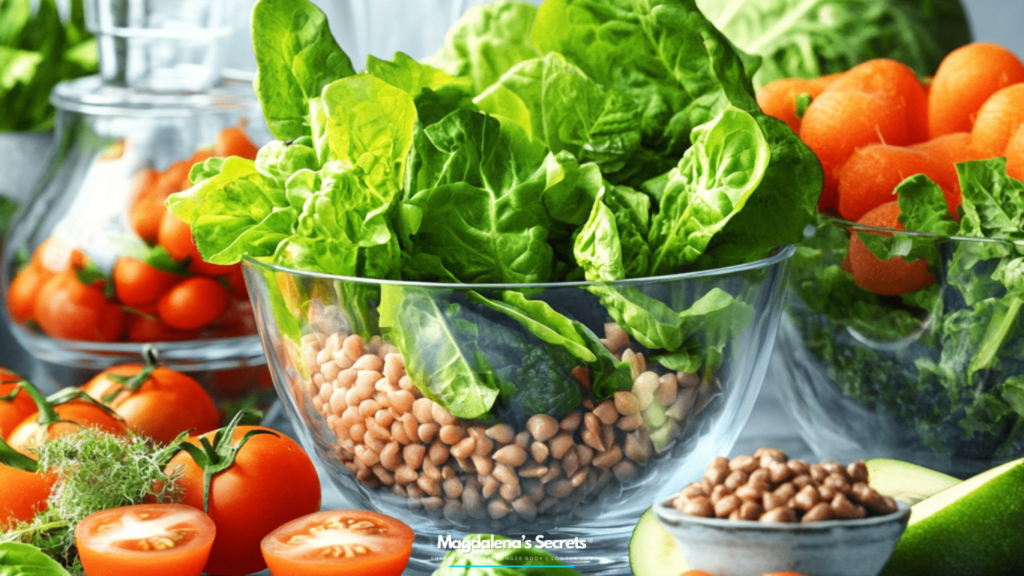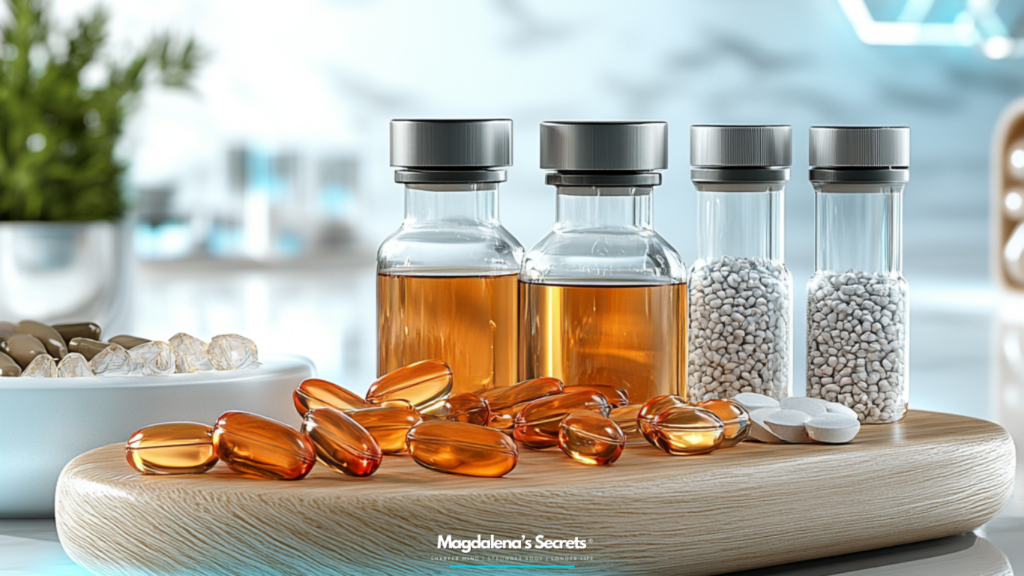In recent years, the focus on functional nutrition and longevity science has brought forward the powerful role of phytochemicals—natural compounds produced by plants that provide numerous benefits beyond basic nutrition. Among these, sulforaphane, a compound most abundantly found in broccoli sprouts, has become one of the most talked-about and studied natural molecules for its remarkable impact on human health.
Experts like Dr. Rhonda Patrick and Dr. Mark Hyman have long emphasized the importance of including sulforaphane-rich foods in our diet. Why? Because sulforaphane is not just a passing health trend—it’s a scientifically validated compound that activates our body’s own defense systems at the cellular level.
What Is Sulforaphane?
Sulforaphane is a sulfur-rich compound derived from glucoraphanin, a type of glucosinolate found in cruciferous vegetables like broccoli, Brussels sprouts, kale, and cauliflower. However, the highest known concentrations are found in broccoli sprouts—up to 100 times more than in mature broccoli.
When broccoli sprouts are chewed or chopped, the enzyme myrosinase helps convert glucoraphanin into sulforaphane. This active compound then enters the bloodstream and starts activating what’s known as Phase II detoxification enzymes, which support the body in neutralizing and removing harmful toxins, carcinogens, and pollutants.
Why It Matters: Detoxification, Inflammation, and Longevity
One of sulforaphane’s most powerful effects is its ability to activate the Nrf2 pathway—a master regulator of antioxidant and detoxification responses. This pathway increases the expression of numerous protective genes that help fight:
- Oxidative stress
- Inflammation
- DNA damage
Researchers have linked sulforaphane to:
- Reduced systemic inflammation
- Improved liver detoxification
- Support for brain health and neuroprotection
- Improved insulin sensitivity
- Protection against environmental toxins and pollutants
- Anti-aging and longevity mechanisms
This is why many biohackers, longevity enthusiasts, and health-conscious individuals have started incorporating broccoli sprouts into their daily routines.
The 24-Hour Turnover: Why Consistency Is Key
A fascinating but often overlooked fact about sulforaphane—and phytochemicals in general—is that they are rapidly metabolized and excreted by the body. Studies show that approximately 60% of sulforaphane is excreted in urine within just 24 hours of ingestion.
This rapid clearance means that the benefits of sulforaphane are transient unless consumed regularly. It’s not a “one-and-done” supplement or superfood. To keep your detox pathways activated and antioxidant defenses strong, you need to consume sulforaphane-rich foods like broccoli sprouts daily or at least several times per week.
This is a point often highlighted by Dr. Rhonda Patrick, who not only consumes broccoli sprouts herself but has also conducted extensive research on their biological effects. Dr. Mark Hyman, another leading voice in functional medicine, also champions cruciferous vegetables as foundational to metabolic and cellular health.
How to Get More Sulforaphane in Your Diet
- Grow your own broccoli sprouts: They’re inexpensive, easy to grow at home, and ready in just 3–5 days.
- Eat raw or lightly steamed cruciferous vegetables: Avoid overcooking, as high heat can deactivate the enzyme needed to form sulforaphane.
- Add mustard seed powder: If you’re eating cooked cruciferous vegetables, adding a pinch of mustard seed powder (which contains myrosinase) can help restore the enzymatic conversion needed to form sulforaphane.
Incorporating these simple habits into your routine can help your body tap into one of nature’s most powerful detoxifying and protective compounds—supporting longevity, resilience, and vitality from the cellular level up.In recent years, the focus on functional nutrition and longevity science has brought forward the powerful role of phytochemicals—natural compounds produced by plants that provide numerous benefits beyond basic nutrition. Among these, sulforaphane, a compound most abundantly found in broccoli sprouts, has become one of the most talked-about and studied natural molecules for its remarkable impact on human health.
Experts like Dr. Rhonda Patrick and Dr. Mark Hyman have long emphasized the importance of including sulforaphane-rich foods in our diet. Why? Because sulforaphane is not just a passing health trend—it’s a scientifically validated compound that activates our body’s own defense systems at the cellular level.
What Is Sulforaphane?
Sulforaphane is a sulfur-rich compound derived from glucoraphanin, a type of glucosinolate found in cruciferous vegetables like broccoli, Brussels sprouts, kale, and cauliflower. However, the highest known concentrations are found in broccoli sprouts—up to 100 times more than in mature broccoli.
When broccoli sprouts are chewed or chopped, the enzyme myrosinase helps convert glucoraphanin into sulforaphane. This active compound then enters the bloodstream and starts activating what’s known as Phase II detoxification enzymes, which support the body in neutralizing and removing harmful toxins, carcinogens, and pollutants.
Why It Matters: Detoxification, Inflammation, and Longevity
One of sulforaphane’s most powerful effects is its ability to activate the Nrf2 pathway—a master regulator of antioxidant and detoxification responses. This pathway increases the expression of numerous protective genes that help fight:
- Oxidative stress
- Inflammation
- DNA damage
Researchers have linked sulforaphane to:
- Reduced systemic inflammation
- Improved liver detoxification
- Support for brain health and neuroprotection
- Improved insulin sensitivity
- Protection against environmental toxins and pollutants
- Anti-aging and longevity mechanisms
This is why many biohackers, longevity enthusiasts, and health-conscious individuals have started incorporating broccoli sprouts into their daily routines.
The 24-Hour Turnover: Why Consistency Is Key
A fascinating but often overlooked fact about sulforaphane—and phytochemicals in general—is that they are rapidly metabolized and excreted by the body. Studies show that approximately 60% of sulforaphane is excreted in urine within just 24 hours of ingestion.
This rapid clearance means that the benefits of sulforaphane are transient unless consumed regularly. It’s not a “one-and-done” supplement or superfood. To keep your detox pathways activated and antioxidant defenses strong, you need to consume sulforaphane-rich foods like broccoli sprouts daily or at least several times per week.
This is a point often highlighted by Dr. Rhonda Patrick, who not only consumes broccoli sprouts herself but has also conducted extensive research on their biological effects. Dr. Mark Hyman, another leading voice in functional medicine, also champions cruciferous vegetables as foundational to metabolic and cellular health.
How to Get More Sulforaphane in Your Diet
- Grow your own broccoli sprouts: They’re inexpensive, easy to grow at home, and ready in just 3–5 days.
- Eat raw or lightly steamed cruciferous vegetables: Avoid overcooking, as high heat can deactivate the enzyme needed to form sulforaphane.
- Add mustard seed powder: If you’re eating cooked cruciferous vegetables, adding a pinch of mustard seed powder (which contains myrosinase) can help restore the enzymatic conversion needed to form sulforaphane.
Incorporating these simple habits into your routine can help your body tap into one of nature’s most powerful detoxifying and protective compounds—supporting longevity, resilience, and vitality from the cellular level up.




